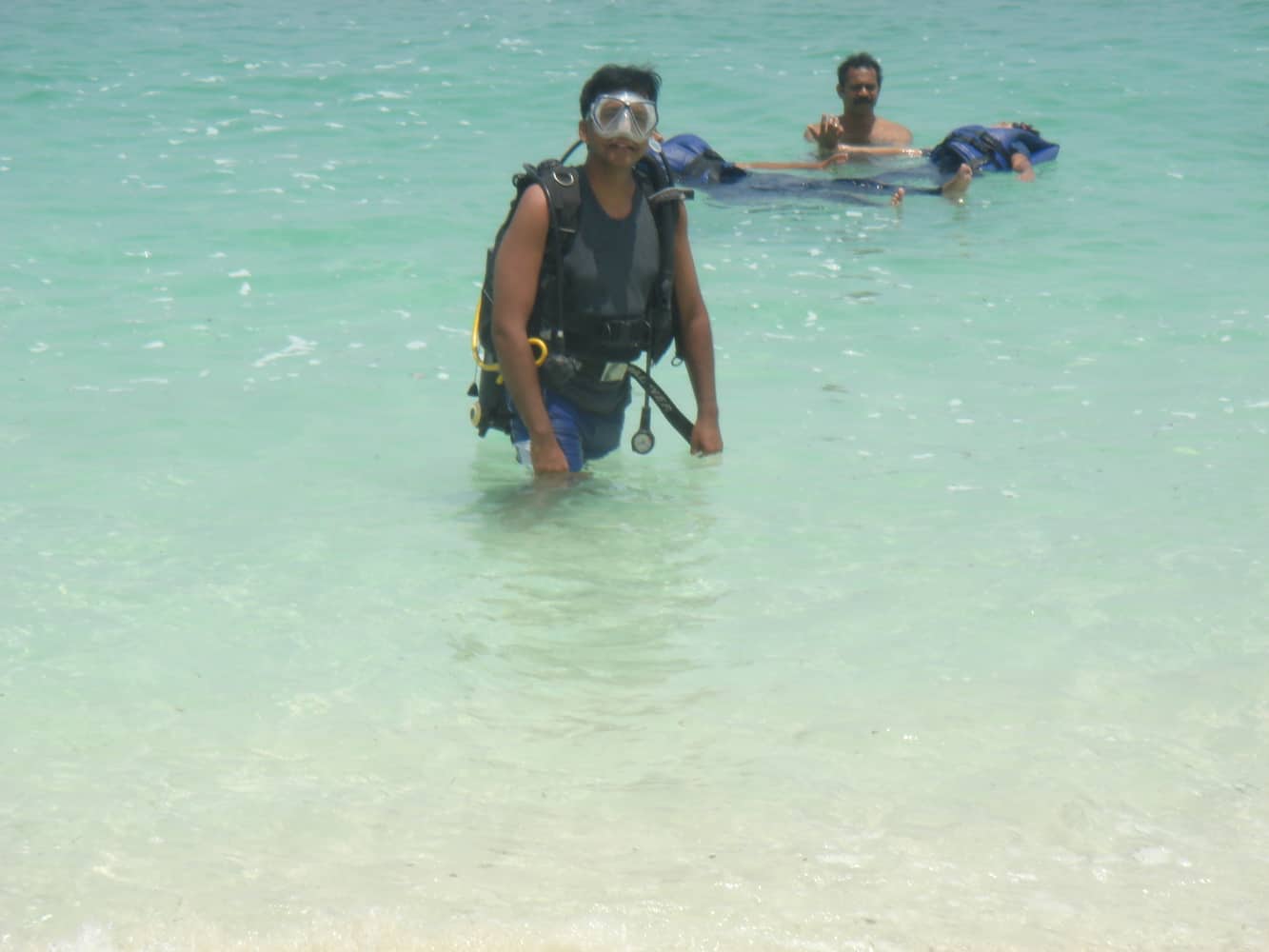I had my first experience in scuba diving at Agatti in Lakshadweep. It just happened by chance. I was strolling on the beach around 11am when I came across the ‘diving centre’. The instructor was sitting outside and offered to take me and my spouse for an exploratory dive. I readily agreed.
I was then given several instructions over the next few minutes to familiarize myself with various aspects of diving and the equipment. In hindsight, the 2 critical instructions were the following:
1. Unlearn normal breathing through nose and learn breathing through mouth
Proper breathing technique under water is normal rhythmic breathing through mouth. Exhaling through nose can cause fogging and also loosen the mask, allowing water to seep in. Also, holding of breath is to be avoided.
2. Learn how to communicate under water
Essentially, 2 communication signs are very important when under water – ok and not ok. If you indicate not ok, the instructor would immediately bring you up to the surface.
It is important to get used to the breathing apparatus
The only inconvenient part initially was biting on the mouthpiece of the breathing apparatus(Regulator) to keep it firm inside the mouth. It sometimes led to secretion of saliva and sometimes, water got in. But once I got used to it, I hardly noticed it and did not have a problem breathing even with a bit of water inside. The best part was even when I removed the mouth piece under water, I could easily put it back without any hitch and without swallowing the salty water. Another reason to feel comfortable under water. While it is ok if you do not know to swim, there is no doubt I could manage better because I knew swimming.
Another unexpected surprise was I could strap on the diving gear over my beach attire. There was no need to change into a wetsuit, possibly because the diving depth was no more than 30ft. and the water was quite warm in the month of April.
Felt a tinge of anxiety just before getting under water
After strapping the oxygen cylinder, which was quite light, it was time for a quick check before wading deep into sea. I felt a slight tinge of anxiety which disappeared only when I was fully under water and able to comfortably breathe! The instructor accompanied both me and my spouse individually. The first time, I was close to the shore but the second time, I went into water from a boat on the lagoon.
Water world is beautiful
It is hard to explain the beauty of the corals and the colorful marine life under water. It is to be seen to be believed. I moved about slowly, explored corals from all angles, halted at times and even walked on the sea bed! It was not that deep, possibly between 20 ft to 30 ft. or so. There was plenty of light at that depth. The surface was clearly visible, but yes, given the refraction of light in water, the depth appears less than what it is. But mentally, I felt comfortable I could ascend easily if case of any problem! I also realized that unless I surfaced, it was hard to ascertain the direction in which I was moving – towards deeper sea or the beach or sideways.
Overall, I spent about 30 minutes under water. I was happy I did not have to communicate ‘not ok’ even once!
A 30 minute dive costs ~INR 3k. Overall time with instructions and trial runs will stretch to an hour or more.
Enjoy what the eyes are seeing under water
The only additional tip I would give first timers is to enjoy what the eyes are seeing under water, and not focus on breathing or time spent.
Scuba diving is great fun, so go for it whenever you have a chance.

Preliminary training for diving, Lakshadweep, India 
Getting under water, Lakshadweep, India
The instructor was a simple local person who had spent his entire life on the island. He asked where I was from and when I replied Bengaluru, he so innocently enquired, “which sea is there in Bengaluru”? When I answered in the negative, he could not fathom how I could live without the sea!
If you are looking for a scuba diving certification, Lakshadweep is a good option to consider. Minicoy is the only island that has ship wreck sites for divers.



